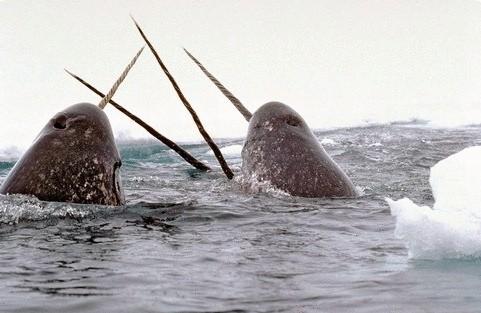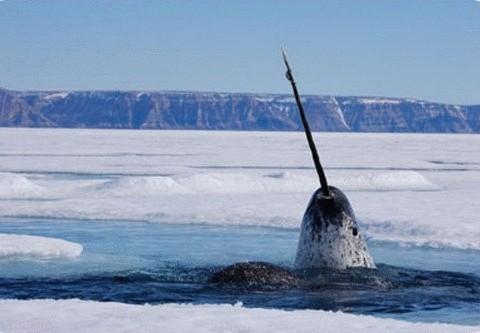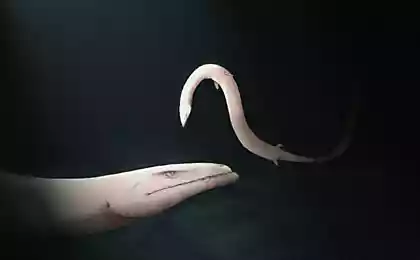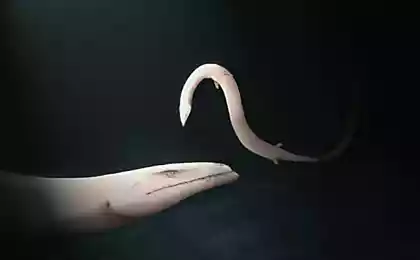576
Narwhal - sea unicorn
The habitat of this marine animal — the Arctic ocean and North Atlantic. The size of the adult males often reach 4.5 meters, weight about a ton and a half. Females weigh slightly less. The head of an adult narwhal is round, with large bumpy forehead, the dorsal fin is missing.

They have spotted skin and 2 upper teeth, one of which, growing, turns into a three-metre Tusk weighing up to ten kg. the narwhal Tusk, spun left in the form of a spiral, quite tough, but has a certain limit of flexibility and can be bent up to thirty inches. Previously it is often passed off as unicorn horn that has curative power.

It was believed that if you throw a piece of narwhal's horn in a glass of poisoned wine, it will change its color.At this time, there is a hypothesis which is quite popular in the scientific community, proving that the narwhal horn is covered with sensitive endings, need the animal to measure the water temperature, pressure and other important life parameters of the aquatic environment.

Narwhals live mostly in small groups of up to ten animals. The basis of the diet of the narwhal, which, incidentally, can hunt at depths of over a kilometer, are cephalopods and demersal fish. The enemies of narwhals in nature can be called other inhabitants of these territories, such as polar bears and killer whales.

However, the greatest damage to the population of narwhals has brought all the same people who hunted them for their meat and horns, successfully used for the manufacture of various crafts. At this time, the animals are under state protection.

Source: /users/87

They have spotted skin and 2 upper teeth, one of which, growing, turns into a three-metre Tusk weighing up to ten kg. the narwhal Tusk, spun left in the form of a spiral, quite tough, but has a certain limit of flexibility and can be bent up to thirty inches. Previously it is often passed off as unicorn horn that has curative power.

It was believed that if you throw a piece of narwhal's horn in a glass of poisoned wine, it will change its color.At this time, there is a hypothesis which is quite popular in the scientific community, proving that the narwhal horn is covered with sensitive endings, need the animal to measure the water temperature, pressure and other important life parameters of the aquatic environment.

Narwhals live mostly in small groups of up to ten animals. The basis of the diet of the narwhal, which, incidentally, can hunt at depths of over a kilometer, are cephalopods and demersal fish. The enemies of narwhals in nature can be called other inhabitants of these territories, such as polar bears and killer whales.

However, the greatest damage to the population of narwhals has brought all the same people who hunted them for their meat and horns, successfully used for the manufacture of various crafts. At this time, the animals are under state protection.

Source: /users/87























